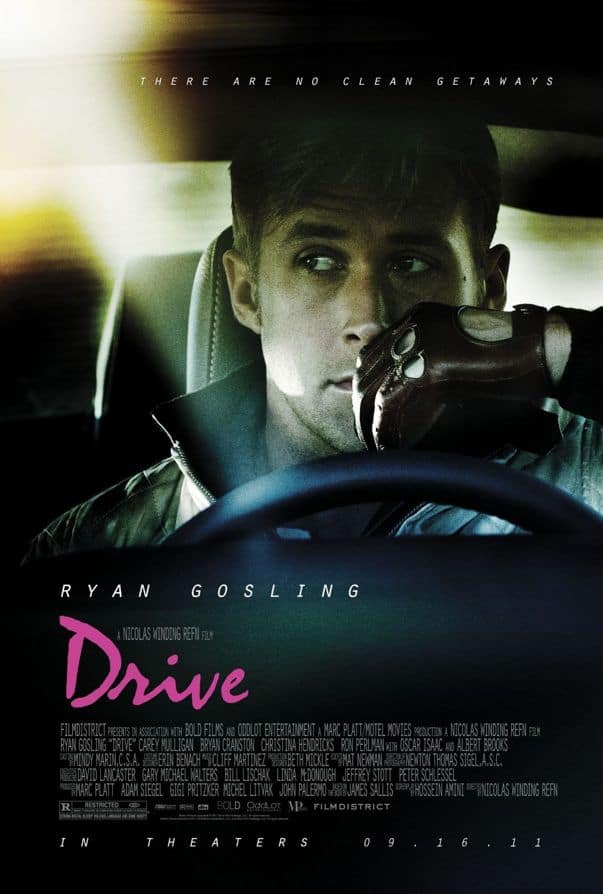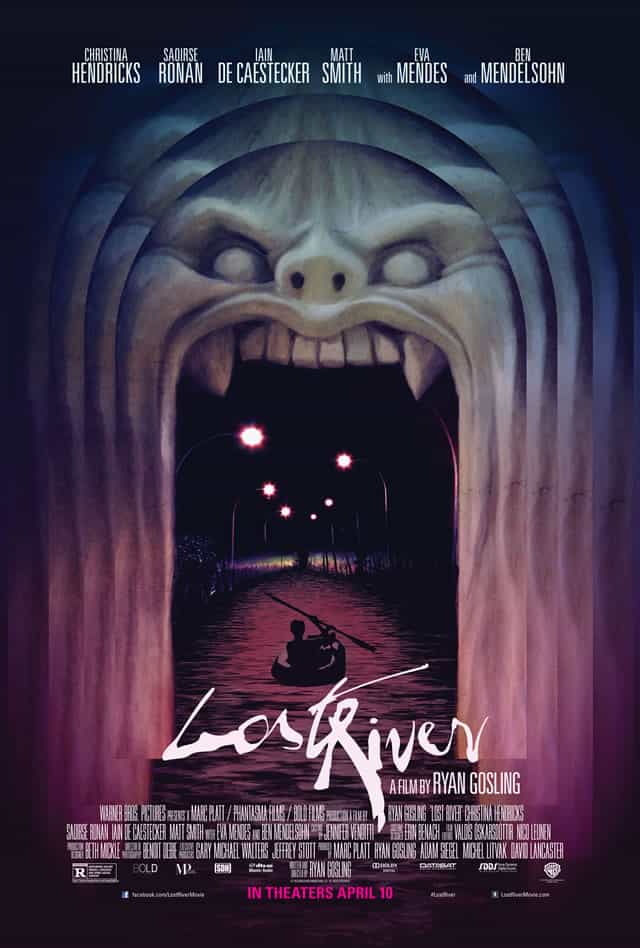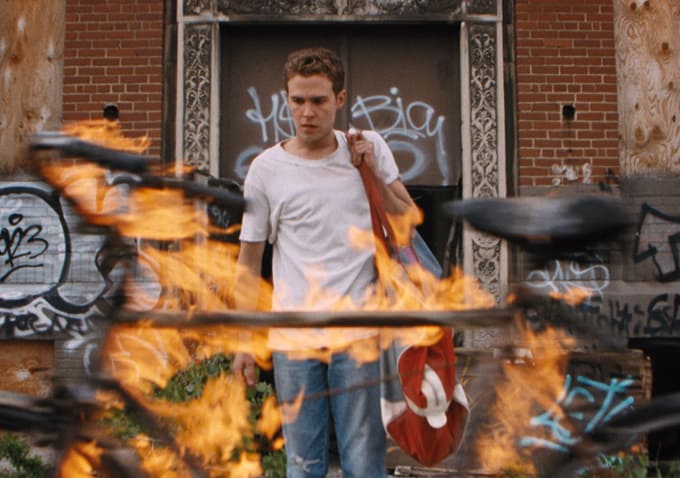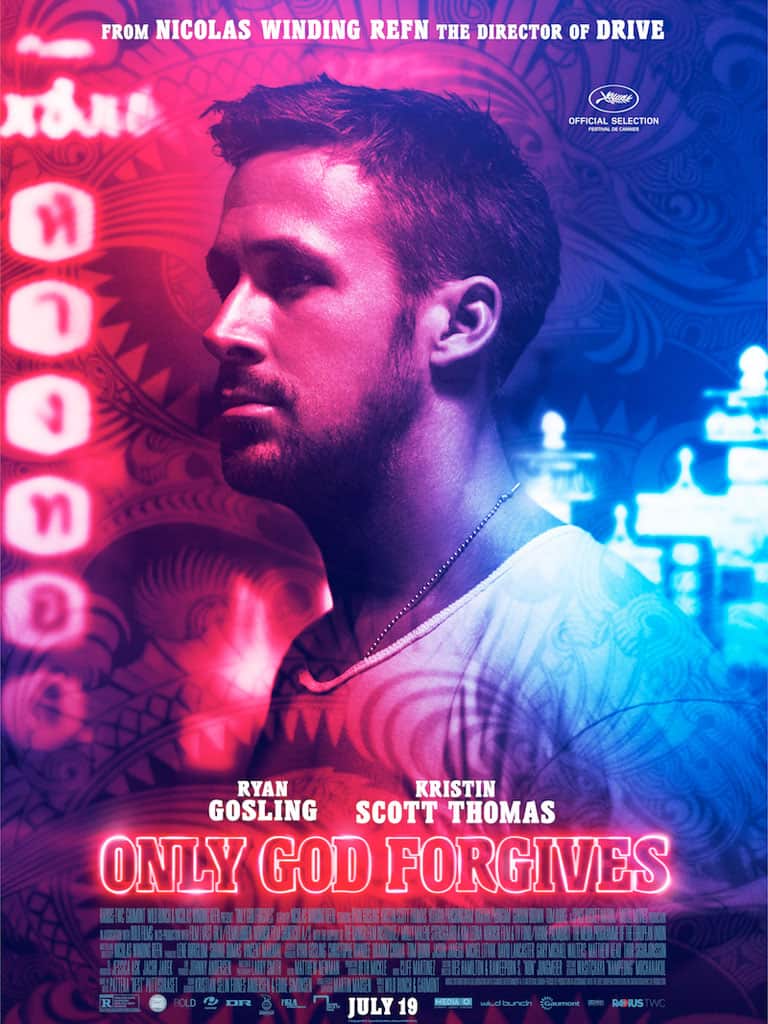
Movie Review: ‘DRIVE’
Ryan Gosling has come a long way since the days of making girl’s hearts swoon in his big breakout film The Notebook. Instead of continuing in the fashion of by-the-book Hollywood romance films, the Canadian born actor took a different route. Gosling followed The Notebook with a series of offbeat indie films that fall more in line with his shocking performance in the 2001 film The Believer. Much like his character in the new Nicolas Winding Refn (Bronson, Valhalla Rising, The Pusher Trilogy) film, Drive, Gosling has managed to walk the fine-line of working in the film industry and yet remaining still silently reclusive. It is this tale of two worlds and how they relate to one another that is at the center of this thrilling, violent, and yet beautiful film that Refn has composed.
Ryan Gosling plays a nameless stuntman who works as a Hollywood stunt driver by day and criminal driver for hire by night. “Driver’s” lethargic attitude and cool demeanor make it seem like he’s content with his current position. His racing skills catch the eye of a former film producer turned gangster played by Albert Brooks. Everything seems to be looking up for the kid when a deal involving stock-car racing starts to form between the two. This is all disrupted when a beautiful girl enters the equation. Irene (Carey Mulligan) and her son live two doors down from “Driver” in a run-down LA apartment building. Initially, Gosling is only being nice when he offers to fix their broken-down car at the garage he helps out at, run by Bryan Cranston. Soon though, he finds himself forming a deeper connection with the two. When Irene’s husband gets released from prison, a series of events are triggered that lead to “Driver” doing a job that will put everyone involved at risk.
Drive doesn’t give you much time to buckle up for the ride. The first fifteen minutes in the film, which acts as a mini vignette, gives you an exciting taste of what to expect. Beautiful cinematography by Newton Thomas Sigel captures the bright lights of LA at night. Using succinct editing and little dialogue, Refn sets a pace for the film that is maintained throughout. Finally, the electronic pop music kicks in after a tense near-capture by the police that fits perfectly with the vibrant neon visuals. I could watch this opening scene over and over again. It is so well done. From there the film takes off down a road of discovery not lined with beautiful scenery. Aside from spotlighting the ugly side of LA, Drive presents people that are going down a rough road ready to crash. Yet, it can also be said to be the most beautiful, unromantic “romance film” you will see all year. Much like the sporadic pops of colors from the neon signs that grace the LA night-sky, the film is littered with spontaneous flashes of violence. Refn’s visceral approach to violence can be seen in the director’s previous films. It is the juxtaposition of this violence with simple heart tugging scenes of innocence between Gosling and Irene’s son that makes the brutal scenes even more intense.
One can argue that Drive is an exercise in style over substance. However, that is completely dismissing the amazing acting that is on display in this film. Gosling is more than capable of playing our thoughtful yet tough hero. Bringing to mind Brando in The Wild One, Gosling’s quiet demeanor always makes the audience think he has something hiding up his sleeve. Thankfully, the perfectly minimal script does little in fleshing out “Driver’s” back-story; leaving an air of mystery to the character. The supporting cast does an outstanding job as well. Christina Hendricks, Ron Perlman, Bryan Cranston, Carey Mulligan, and the phenomenal Albert Brooks all leave behind memorable characters even if some of them are not on screen for very long. Albert Brooks is a joy to watch as the slick mobster you don’t want to cross.
Where Drive will most surprise people is the subtle ways Refn explores the idea of masculinity throughout the film. I would go so far as to say, that most (if not all) of the Danish director’s films deal with the idea of “man finding himself” or “discovering his masculinity.” In Bronson, Tom Hardy becomes the man who he wants to be in his own mind while locked-up in prison. In Valhalla Rising, a religious excursion brings man face to face with the emptiness and the evil that lurks inside of him. In Drive, Gosling searches for what kind of man he is but never fully finds the answer. Like the many heroes he plays as the stunt-driver on the film-sets, “Driver” attempts to become these same heroes at night . . . behind the wheel . . . in his iconic, white satin track jacket, with embroidered scorpion on the back. In the scenes with Irene and her son, we never see Gosling wear his scorpion-adorned jacket; a sign of him letting go of his “masculinity” and “strength.” Yet, through the many violent obstacles he has to later face, we see Gosling and his jacket become more and more dirty and bloody. By the end of the film, he wears the bloody mess proudly walking into a Chinese restaurant, not afraid to hide under the reclusive shell that we see him hide in around Irene. In between shotgun blasts, screeching tires, and bloody stabbings, Drive tells a heart-breaking story of a man trying to find who he really is. Is he the nice-guy, fake hero, on the film sets and at the car garage? Or is he the anti-hero that prowls the crime-ridden streets at night?
Drive is a visually striking vehicle that has enough power in its engine to focus on some important themes regarding man’s identity in relation to the “fake world” of LA. The all-around solid cast breathes life into what could have been just a knock-off of 70’s drive-in films like Vanishing Point and Two-Lane Blacktop. Refn certainly focuses more on visual storytelling with Drive, and some might feel that the script and dialogue could have used a little more attention. On the other hand, you have to give credit to a filmmaker that can make you understand characters without having monologues or long exposition between characters. Instead, we get subtle looks which speak all the words we need to feel their emotions. Drive is an example of a director with a clear and raw vision that maintains control of this high-speed ride the entire time. Easily, Drive makes my list as one of the highlights of 2011 and acts as a wake-up call for Hollywood to take note of the film’s talented director.



